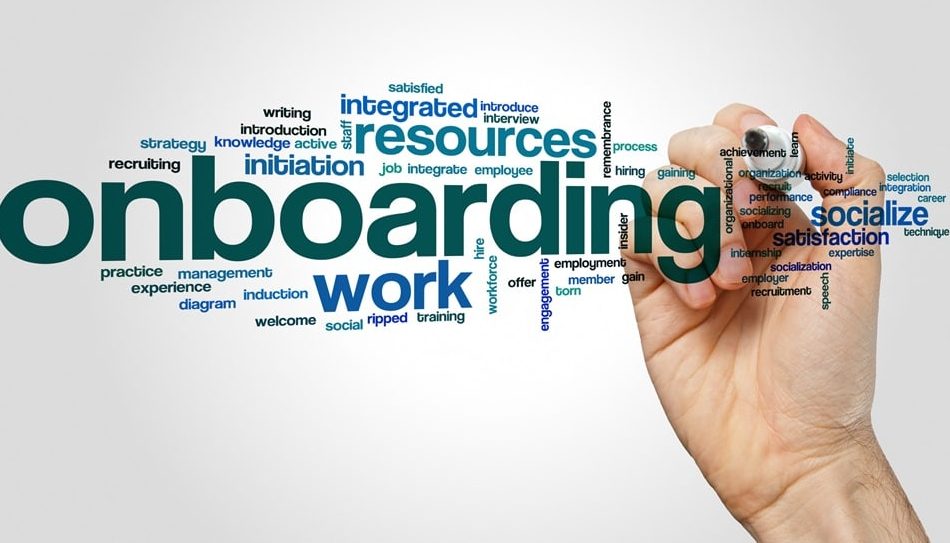The globalized IT industry increasingly relies on international talent to fill critical roles and drive innovation. Employer of Record (EOR) services enable businesses to hire globally without establishing legal entities in every country.
Successfully onboarding international IT talent through an EOR requires careful planning and execution.
Effective Communication
Clear communication forms the foundation of successful international onboarding. From the moment a candidate accepts an offer, companies must maintain consistent communication channels. Providing a detailed timeline of the onboarding process, including key milestones and deadlines, helps new hires navigate the transition. Clarifying roles and responsibilities between the company, the EOR provider, and the new hire prevents confusion and ensures a smooth process.
Establishing a dedicated point of contact within the organization gives new employees a reliable resource for questions or concerns.
Best Practices for Onboarding International IT Talent through EOR
The globalized IT industry increasingly relies on international talent to fill critical roles and drive innovation. Employer of Record (EOR) services enable businesses to hire globally without establishing legal entities in every country. Successfully onboarding international IT talent through an EOR requires careful planning and execution.
Effective Communication
Clear communication forms the foundation of successful international onboarding. From the moment a candidate accepts an offer, companies must maintain consistent communication channels.
Providing a detailed timeline of the onboarding process, including key milestones and deadlines, helps new hires navigate the transition. Clarifying roles and responsibilities between the company, the EOR provider, and the new hire prevents confusion and ensures a smooth process.
Establishing a dedicated point of contact within the organization gives new employees a reliable resource for questions or concerns.
Leveraging EOR Expertise
One of the primary advantages of using an EOR is their expertise in local employment laws and regulations. Companies should work closely with their EOR provider to ensure all necessary documentation is prepared and filed correctly.
Seeking guidance on country-specific requirements for employment contracts, tax forms, and other legal documents is crucial for compliance. Staying informed about local labor laws, including working hours, leave policies, and benefits requirements, helps avoid potential legal issues.
Global agent of record services can provide invaluable assistance in navigating these complex international employment regulations, ensuring that companies remain compliant across multiple jurisdictions.
Technical Onboarding
For IT professionals, having the right tools and access from day one is crucial. Coordinating with the IT department and the EOR to set up necessary accounts, VPNs, and software licenses before the start date ensures a smooth technical onboarding. Shipping any required hardware well in advance, considering potential customs delays, prevents productivity setbacks.
Offering flexible equipment options, such as a stipend for home office setup or the choice between different types of devices, accommodates individual preferences and work styles. Conducting a virtual IT orientation familiarizes new hires with the company’s systems and tools, enabling them to hit the ground running.
Need Career Advice? Get employment skills advice at all levels of your career
Comprehensive Learning Program
Creating a comprehensive learning program helps international hires quickly become productive team members. A structured training schedule covering both technical skills and company-specific processes provides a solid foundation for success.
Utilizing e-learning platforms to provide self-paced training modules accessible across different time zones accommodates various learning styles and schedules. Organizing virtual shadowing sessions with experienced team members offers hands-on learning opportunities, bridging the gap between theory and practice.
Inclusivity and Cultural Awareness
Fostering inclusivity and cultural awareness is essential when onboarding international talent.
Providing cultural awareness training for existing team members promotes understanding and collaboration across diverse teams. Celebrating cultural diversity through virtual events or knowledge-sharing sessions enriches the company culture and promotes a sense of belonging for international hires.
Being mindful of religious and cultural holidays when scheduling meetings or setting deadlines demonstrates respect and consideration for diverse backgrounds.
Regular Follow-ups and Feedback
Consistent follow-up is crucial for identifying and addressing any issues early in the onboarding process. Scheduling regular one-on-one meetings between new hires and their direct managers provides opportunities for feedback and support. Implementing a formal feedback process at 30, 60, and 90 days helps assess the onboarding experience and identify areas for improvement.
Using anonymous surveys can gather honest feedback about the onboarding process, providing valuable insights for refining the program.
Documentation and Knowledge Management
In a remote, international setting, clear documentation becomes even more critical. Creating comprehensive, easily accessible documentation for company processes, coding standards, and project workflows ensures consistency across distributed teams. Implementing a knowledge management system captures and shares institutional knowledge, preventing information silos.
Encouraging new hires to contribute to and update documentation based on their onboarding experience keeps information current and relevant.
Long-term Integration and Growth
Onboarding doesn’t end after the first few weeks. Planning for long-term success involves developing clear career progression paths that account for remote and international employees.
Offering ongoing language support or classes if needed demonstrates a commitment to employee development. Creating opportunities for international employees to visit headquarters or attend company events in person when possible strengthens relationships and reinforces company culture.
Leveraging Technology
Leveraging technology bridges the gap between international hires and the rest of the team. Implementing project management and collaboration tools facilitates asynchronous work across time zones, ensuring seamless communication and productivity.
Virtual reality or augmented reality tools can provide immersive training experiences, overcoming the limitations of physical distance. AI-powered chatbots can offer instant answers to common onboarding questions, providing 24/7 support to new hires.
Key Best Practices
Successful onboarding of international IT talent through an EOR requires a multifaceted approach that addresses various aspects of the employee experience. By synthesizing the insights from industry leaders and successful case studies, we can identify a set of core best practices that form the foundation of an effective onboarding strategy. These practices encompass everything from initial communication to long-term career development, ensuring a comprehensive approach to integrating new hires into your organization.
The following list outlines the key best practices that organizations should consider implementing in their international IT talent onboarding process:
- Establish clear communication channels and provide detailed onboarding timelines.
- Leverage EOR expertise for legal compliance and documentation.
- Create personalized cultural integration experiences.
- Ensure robust technical support and equipment provision.
- Develop comprehensive learning programs and documentation.
- Foster inclusivity and cultural awareness within the organization.
- Implement regular check-ins and feedback mechanisms.
- Plan for long-term integration and career growth.
- Utilize technology to facilitate seamless collaboration and training.
While each of these practices is important in its own right, the true power lies in their collective implementation. By adopting a holistic approach that incorporates all of these elements, organizations can create a synergistic onboarding experience that not only smoothly integrates new international IT talent but also sets the stage for their long-term success and contribution to the company.
It’s important to note that these best practices should not be viewed as a rigid checklist, but rather as a flexible framework that can be adapted to suit the specific needs of your organization and the unique circumstances of each new hire. Regular evaluation and refinement of these practices based on feedback and outcomes will ensure that your onboarding process remains effective and relevant in the ever-evolving landscape of international IT recruitment and employment.
Conclusion
By implementing these best practices, companies can create a comprehensive and effective onboarding process for international IT talent hired through an EOR. This approach ensures legal compliance while setting the foundation for long-term employee engagement, productivity, and retention.
As the global talent landscape continues to evolve, mastering international onboarding becomes an increasingly valuable competitive advantage in the IT industry.
The rise of remote work and distributed teams has accelerated the adoption of EOR services, making effective international onboarding more critical than ever.
Companies that excel in this area gain access to a broader talent pool, increase diversity within their organizations, and foster innovation through varied perspectives and experiences. However, success requires a commitment to continuous improvement and adaptation.
Regular evaluation and refinement of the onboarding process based on feedback from new hires, managers, and EOR providers ensure its ongoing effectiveness.
As technology and work practices evolve, companies must stay agile, incorporating new tools and methodologies into their onboarding programs. By prioritizing the integration and success of international IT talent, organizations can build truly global teams capable of driving growth and innovation in an increasingly interconnected world.




